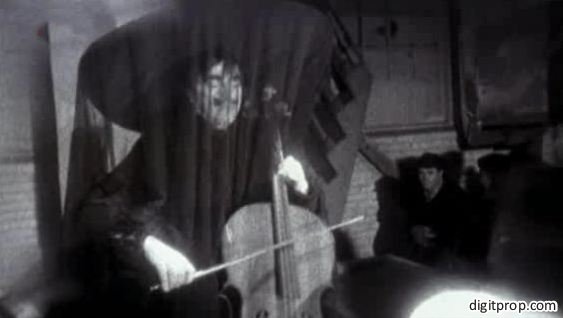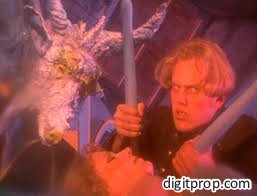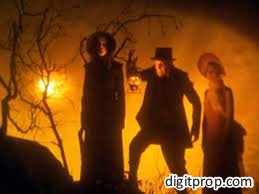If you know this title, congratulations: You seem to be a true scifi geek. If not, don’t feel bad – it’s a rather obscure book by conventional literature standards. You may know the movie that’s based on Roadside picnic, though: Stalker. Still no luck? Ok, this will be a tough sale, but don’t let your mind miss an opportunity to be blown away.
What would happen if aliens visited earth? Now, we all know the stereotypes and Hollywood templates, but what would really happen? Well, it depends on how these aliens view us, what they want from us, why they came. Now imagine they didn’t want anything from us. Imagine that apparently they didn’t even take notice of our existence. That we are so far below their level that they just don’t care.
That is – in a nutshell – the premise of roadside picnic. As one scientist in the book puts it,
Picture a forest, a country road, a meadow. Cars drive off the country road into the meadow, a group of young people get out carrying bottles, baskets of food, transistor radios, and cameras. They light fires, pitch tents, turn on the music. In the morning they leave. The animals, birds, and insects that watched in horror through the long night creep out from their hiding places. And what do they see? Old spark plugs and old filters strewn around… Rags, burnt-out bulbs, and a monkey wrench left behind… And of course, the usual mess—apple cores, candy wrappers, charred remains of the campfire, cans, bottles, somebody’s handkerchief, somebody’s penknife, torn newspapers, coins, faded flowers picked in another meadow.
The alien visitation left behind six zones filled to the brim with artifacts and reality-defying phenomena. The aliens are nowhere to be seen, and it seems they have left as quickly as they came, after little more than a day. However, what remains is a mess of alien technology that is so far beyond human comprehension that its effects border on the supernatural.
The alien artifacts are by no means harmless, and they effectively render the zones uninhabitable and extremely difficult to navigate. The zones may even contain technology which might lead to global destruction or the extinction of the race. Therefore, access is tightly regulated and only careful scientific expeditions are allowed. At their edge, frontier societies appear comprised of scientists, venturers and the so-called stalkers. Stalkers are people who go into the forbidden zones on their own, against the law. They face great danger, both from law-enforcement and from the zones themselves. However, considering the nature of the artifacts that can be found in the zone, the reward is potentially boundless.
Now, as ‘hard scifi’ as the above sounds, Roadside Picnic is not about technology or aliens or laser weapons. It’s about us humans. The remains of the ‘picnic’ are so out of the ordinary that our only way to cope with them is to do business as usual. In the face of technology lightyears ahead of our own, it’s the same old games of greed, bickering, deception and betrayal. The alien artifacts are taken as found, as weapons, as energy sources, as toys, but any attempt to crack their secrets and learn the why and whereabout of the aliens are thwarted by intrigue and powerplay.
Wikipedia has a nice listing of the artifacts and phenomena encountered in the zone, and even knowing that these lists are figments of the authors’ imagination, they are thrilling enough to keep your mind busy. It’s very interesting how the inhabitants of the frontier city Harmont, for whom they are entirely real, react to them. Basically shrugging their shoulders, they accept them as new facts and integrate them into their daily business, trying to find ways to take advantage of them. No one seems to care about the deeper cosmological implications, or about the fate of humanity in general.
Roadside Picnic is a very pessmistic novel, which basically concludes that Homo sapiens will always stick with his behavioural programs designed for small hordes of cave-dwelling gather-hunterers. Even in the face of something so clearly superior and simultaneously threatening and promising as the visitors, people are still people. This could actually be quite funny, but the novel is very serious about it: In the end, we know nothing, and the fact that we know nothing is owned to our inability to transcend ourselves.
You can actually find the full text of Roadside Picnic online here, in Russian and English side by side.
Roadside Picnic has been written by two brothers, Arkady Natanovich Strugatsky and Boris Natanovich Strugatsky, who are actually quite famous in Russia and among scifi fans in the West. They are remarkable characters, and it’s worthwhile to look into other works by the Strugatsky brothers, as is a trip to their Wikipedia entry.
As I mentioned above, Roadside picnic has been turned into a beautiful and brilliant movie, Stalker, by Andrei Tarkovsky. It’s usually said to be ‘loosely based’ on the novel, which technically it is, but I think it’s an extremely faithful translation of the book’s atmosphere, human dilemma and fatalistic approach of the protagonist into film. So go watch it. Here is the IMDb entry (and don’t let the ridiculous movie poster put you off). Here is the DVD.








